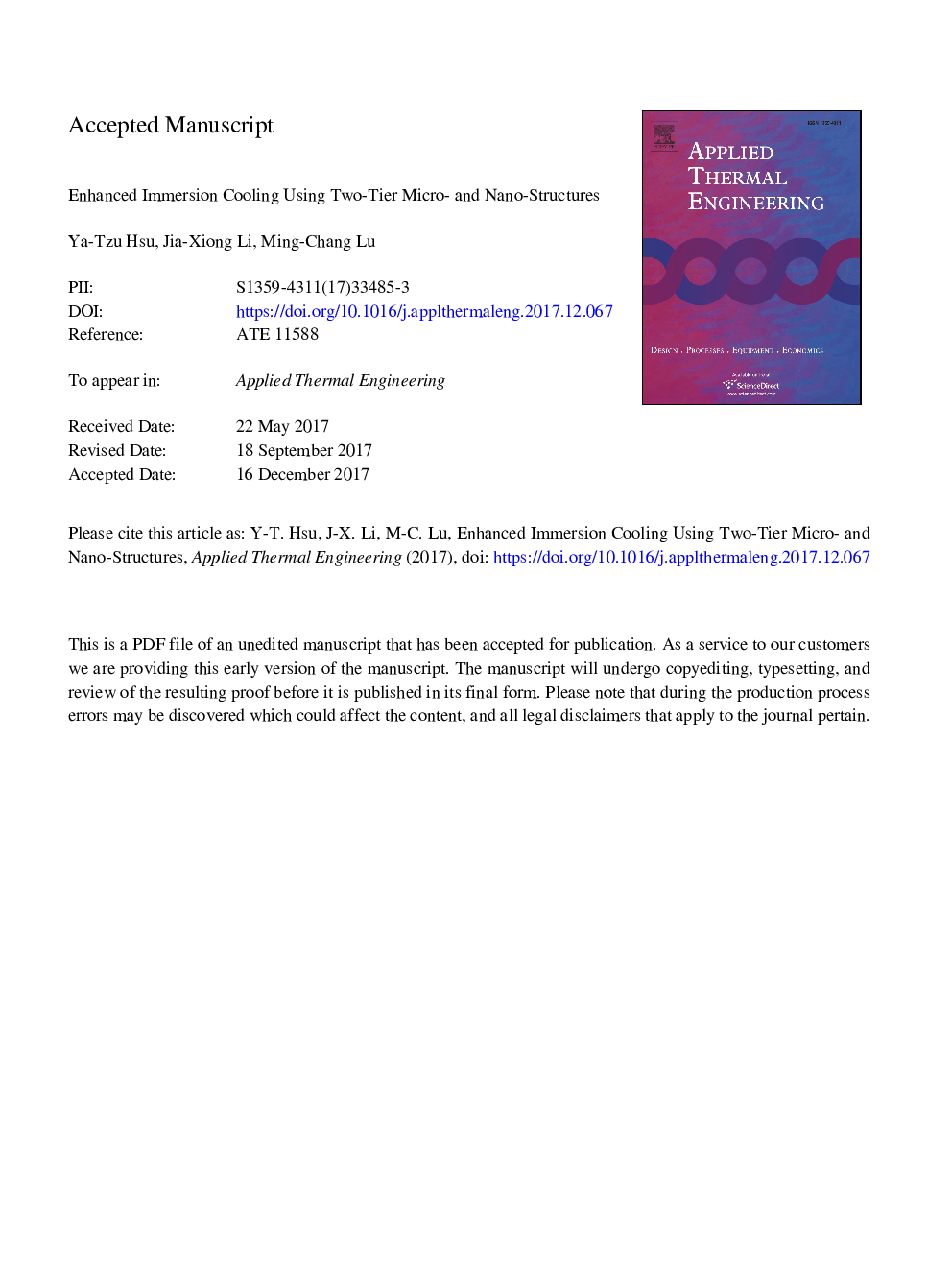| Article ID | Journal | Published Year | Pages | File Type |
|---|---|---|---|---|
| 7046287 | Applied Thermal Engineering | 2018 | 40 Pages |
Abstract
Continual increases in the functionality and miniaturization of electronic devices have resulted in a rapid increase in the power density of such devices. Thus, an efficient cooling technology is required to maximize heat dissipation and prevent electronic failure. Immersion cooling is a promising technique for the thermal management of high-power-density electronics. However, common working fluids in immersion cooling have high global warming potential, and the heat transfer performance of immersion cooling requires improvement to achieve efficient cooling of state-of-the-art high-power-density electronics. In this study, Novec 649, which has low global warming potential and a low boiling point, was applied as a working fluid for immersion cooling. A Si nanowire (SiNW) array, Si micropillar (SiMP) array, and Si nanowires on a Si micropillar (SiNW/MP) two-tier structure were employed to enhance boiling performance. The SiMP surface exhibited the highest critical heat flux (CHF) of 23.5â¯Â±â¯1.3â¯W/cm2, whereas the SiNW surface exhibited the lowest CHF but a relatively high heat transfer coefficient (HTC). The SiNW/MP surface exhibited the highest HTC of 23611.7â¯Â±â¯1586.2â¯W/m2â¯K and a relatively large CHF of 17.4â¯Â±â¯1.2â¯W/cm2. Compared with a plain SiO2 surface, the CHF and HTC of the SiNW/MP two-tier structure could be enhanced by 30% and 455%, respectively. These results suggest that the SiNW/MP surface is effective for enhancing immersion cooling.
Related Topics
Physical Sciences and Engineering
Chemical Engineering
Fluid Flow and Transfer Processes
Authors
Ya-Tzu Hsu, Jia-Xiong Li, Ming-Chang Lu,
